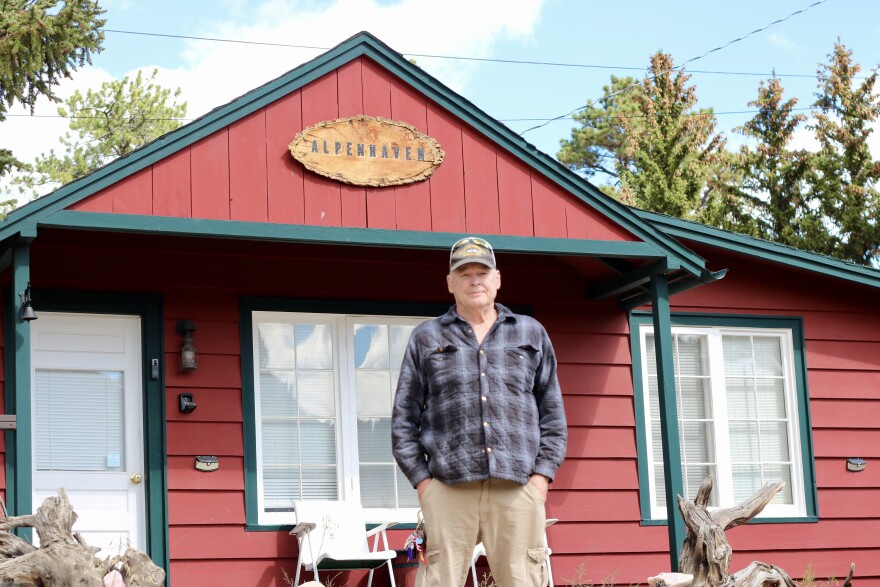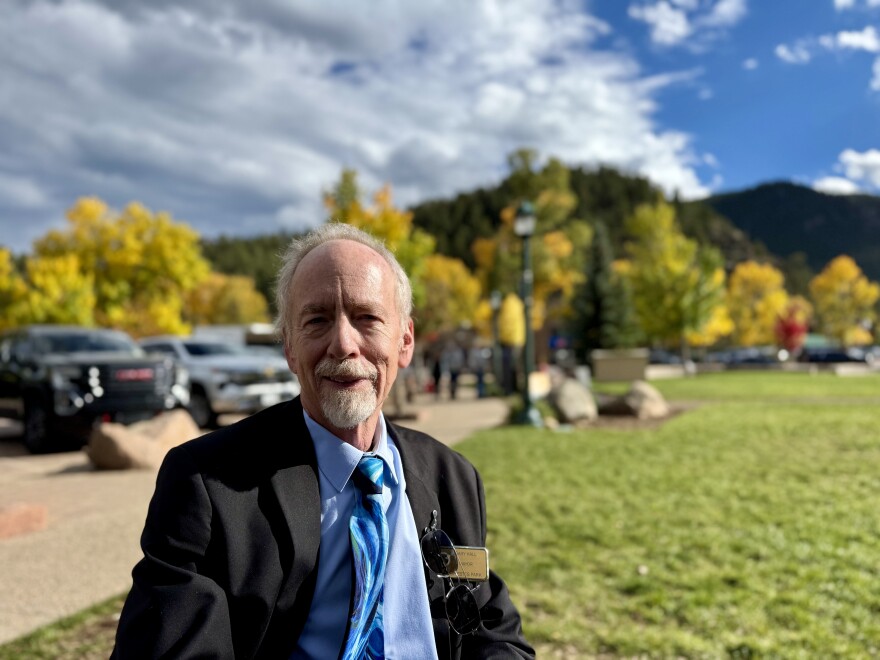It was a beautiful fall day at Rocky Mountain National Park in Colorado. The aspen trees shimmered a bright yellow and snow dusted the high peaks in the distance.
“I just love seeing all the mountains. I love seeing the water. I just love the landscape,” said Maureen Brogdon, from Arkansas, who was in the area visiting friends.
At the scenic overlook she was stopped at, another visitor watched a herd of elk in the valley below through binoculars.

A steady stream of cars passed by.
But it wasn’t a typical fall day at one of the most popular national parks in the country. The night before, the federal government shut down, leaving fewer workers on the job. Yet the Trump Administration decided that national parks should largely remain open, nonetheless.
“Park roads, lookouts, trails, and open-air memorials will generally remain accessible to visitors,” the National Park Service’s plan said.
Information services, educational programs and road maintenance would grind to a halt. At Rocky Mountain, the doors to a popular visitor center outside the park gates were locked. A ranger at the entrance booth ushered in cars, no passes or advance reservations required.
'I worry'
Michelle Shoeder was excited to be visiting. She and her husband, from Wisconsin, had plans to go hiking. But she had mixed feelings about the park being open with limited staffing. The Park Service’s plan said it expected 64% of workers to be furloughed.
“I feel really bad if it’s a free-for-all,” Shroeder said. “Just people being disrespectful to public lands. And I worry, especially the longer this goes on.”

It’s a concern shared by Thomas Booth, who runs a vacation rental business in Estes Park just a stone’s throw from the official park sign.
That morning, he woke up early to check the news and see if the government had shut down and whether the park would open. But he wasn’t relieved to see that it was, even though some of his guests were there exploring that day.

He said when the government shut down in 2018 for more than a month, during President Trump’s first term, national parks stayed open, and he saw the impacts.
“Bathrooms were trashed,” he said. “I thought it put visitors in more danger. I think that it probably would’ve been in the public interest – and the park’s interest – to gate off the park and not allow people in.”
The National Park Service said areas could be closed if health or safety issues arise.
Booth also worried that local businesses like his could suffer from more limited services at the park, even if it’s generally open.
“People take some of those things or all of those things into account and pick other places to go on vacation that aren’t impacted as much as we are by a government shutdown,” he said.
'Connected at the hip'
Rocky Mountain National Park sees more than four million visitors a year. After the summer months, September and October draw the most visitors to national parks in Colorado. Gov. Jared Polis said keeping Rocky Mountain National Park open was his top priority in a shutdown.
“Rocky Mountain National Park is a major draw for visitors from around the world, especially now during leaf-peeping season, and a major economic driver for Colorado’s rural communities,” he said in a statement Tuesday.

Recent federal data showed visitors spent $29 billion in communities near national parks across the country last year.
The interdependence is why Estes Park Mayor Gary Hall was glad the park is still running.
“Rocky Mountain National Park and Estes Park are connected at the hip, and the soul and the heart,” he said. “We do need the people coming through, shopping at our merchants, staying at our lodges. We do need that for the health of the town.”

He said he’ll continue to monitor the situation to make sure it’s sustainable, noting there are still staff working there, though in minimal numbers.
For now, national parks that collect entrance and recreation fees are told to use the balances they have to keep bathrooms and trash tidy and to work the entrance booths. That’s as long as there are still funds left.
Parks could also make agreements with states, tribes or other third parties to support continued services through donations, which Colorado, Arizona and Utah have done in the past.
“The State looks forward to learning the details of this process should such a need arise,” Polis said.
This story was produced by the Mountain West News Bureau, a collaboration between Boise State Public Radio, Wyoming Public Media, Nevada Public Radio, KUNR in Nevada, KUNC in Northern Colorado, KANW in New Mexico, Colorado Public Radio and KJZZ in Arizona as well as NPR, with support from affiliate newsrooms across the region. Funding for the Mountain West News Bureau is provided in part by the Corporation for Public Broadcasting and Eric and Wendy Schmidt.




